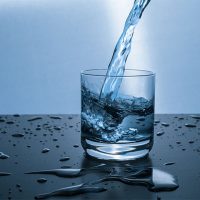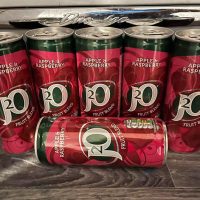Recently updated on March 25th, 2024 at 05:13 pm

The water consumed around the world comes from different sources in many forms. Whether tap water is supplied through community water systems, fresh spring water, purified, or distilled water, everyone’s choice of drinking water is determined by either availability or preference.
The way drinking water is handled before finally being labelled safe for consumption is determined by the amount of harmful contaminants and other substances present in the water in its raw form. But some types of water can be consumed directly from their source while others need a little work to make them potable. Some even need to be degassed using a degassing vacuum pump to remove excess dissolved gases.
Below are some types of water that are considered safe for drinking:
1. Tap Water
Tap water is the most readily available type of drinking water. It’s sourced from surface water like lakes, rivers, streams, and reservoirs before being treated. This piped water runs in your home and is accessed directly through faucets. To make it safe for use, it undergoes a purification process that frees it from contaminants.
Even though tap water isn’t 100% pure, it’s safe for drinking because harmful bacteria and other contaminants have been filtered to safe levels. Its taste, colour, and smell are also greatly improved during the purification process. Apart from being the most affordable type of drinking water, it also contains some minerals beneficial to the body.
2. Spring Water
This type of water doesn’t need to be pumped to the surface from an underground aquifer, and it naturally springs up from underground sources like fresh water. It’s considered one of the safest forms of drinking water because it requires minimal to no chemical processes to make it potable. It’s also regarded as healthy because of its mineral composition derived from the source it’s extracted from.
Spring water has a distinct taste that’s known to quench thirst and is consumed as it is without any addition. The mineral content, however, varies from one source to another. Traditionally, it was consumed directly from the source. Today, it’s bottled at the point of extraction and distributed for consumption. It, however, doesn’t pass through community water systems. Besides coming from a fresh, natural source, spring water contains nutrients that’ll keep you hydrated by helping your body cells to regenerate.
3. Mineral Water
Like spring water, mineral water also comes from a protected underground source. The difference is that mineral water is formed as a result of water running over rocks from mountains and rock formations, and collecting minerals along the way. However, it only has trace minerals compared to spring water, which is loaded with minerals because it absorbs minerals at its source.
Mineral water can be hard or soft depending on the amount of calcium or magnesium ions that have dissolved in it. The higher the amount, the harder the water. Soft mineral water has a salty taste while its hard counterpart tends to have an earthy flavour. For mineral water to pass the test, it should have at least 250 parts per million salts dissolved in it with a consistent amount of minerals. Mineral water can be natural or can contain added components. Unlike other forms of water, mineral water is purely meant for drinking.
4. Purified Water
Purified water is that which has been subjected to a filtration process to get rid of harmful contaminants and other substances to make it safe for drinking. It can be tap water, surface water, or water derived from other sources. Water can be purified through reverse osmosis, deionization, or in other different ways.
You can purify water at home by installing a home filtration unit or buy water that has already gone through the filtration process. Even though the purification process removes some beneficial components from the water and the bad, it’s one of the cleanest types of water to drink.
5. Distilled Water
Distilled water is water that’s been boiled, and the vapor is then collected and condensed back to liquid form. During distillation, components like metals that have a higher boiling point than water remain behind. The process separates contaminants from the steam that’s collected during the process, and the final result is pure water.
You should note that distilled water, though being water in its purest form, is devoid of most nutrients. That’s why distilled water is also called demineralized or sanitized water. Distillation of water is usually done in areas without access to clean drinking water or where its source is considered overly contaminated.
6. Alkaline Water
The PH scale is used to measure the alkalinity or acidity of a substance on a scale of 0-14. Seven is neutral, with anything below seven being acidic and above being alkaline. Plain water has a PH value of around seven while alkaline water is believed to have a higher pH value.
Alkaline water is formed when water passes through porous rocks and collects minerals which makes it highly alkaline. It’s believed that some diseases thrive in acidic environments in the body. Alkaline water is believed to have restorative abilities in the body’s pH balance when consumed. A higher level of nitrogen present in alkaline water is also suitable for hydration.
If the natural version of alkaline water isn’t available, you can use artificial alkaline water, which is made through the process of electrolysis. But it doesn’t contain the minerals found in natural alkaline water. However, both versions of alkaline water are safe to drink.
7. Sparkling Water
This type of water is also known as carbonated or fizzy water. It’s usually bottled and can be made from regular or mineral water that undergoes a carbonation process, making the water fizzy. The carbon dioxide added to the water brings out the sparkle and fizz.
Conclusion
Before consuming water, make sure you know its source to avoid the risk of contracting a waterborne disease. If, for any reason, you don’t trust the source of drinking water and suspect it of contamination, subject it to a purification method that’s available to you. Consider the ideas mentioned here.
Author Bio
Kenn Davidson is a lab researcher and writer. He loves writing about the latest medical and scientific innovations in the interest of public health. When not working, Kenn can be found in his kitchen sampling new coffee grounds sourced locally.



